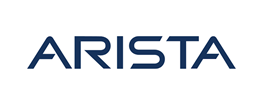- Course overview
- Course details
- Prerequisites
Course overview
About this course
Developing and Deploying AI/ML Applications on Red Hat OpenShift AI (AI267) provides students with the fundamental knowledge about using Red Hat OpenShift for developing and deploying AI/ML applications. This course helps students build core skills for using Red Hat OpenShift AI to train, develop and deploy machine learning models through hands-on experience.
This course is based on Red Hat OpenShift ® 4.14, and Red Hat OpenShift AI 2.8.
Audience profile
- Data scientists and AI practitioners who want to use Red Hat OpenShift AI to build and train ML models
- Developers who want to build and integrate AI/ML enabled applications
- MLOps engineers responsible for installing, configuring, deploying, and monitoring AI/ML applications on Red Hat OpenShift AI
At course completion
As a result of attending this course, you will understand the foundations of the Red Hat OpenShift AI architecture. You will be able to install Red Hat OpenShift AI, manage resource allocations, update components and manage users and their permissions. You will also be able to train, deploy and serve models, including hot to use Red Hat OpenShit AI to apply best practices in machine learning and data science. Finally you will be able to create, run, manage and troubleshoot data science pipelines.
Course details
Introduction to Red Hat OpenShift AI
- Identify the main features of Red Hat OpenShift AI, and describe the architecture and components of Red Hat AI.
Data Science Projects
- Organize code and configuration by using data science projects, workbenches, and data connections
Jupyter Notebooks
- Use Jupyter notebooks to execute and test code interactively
Installing Red Hat OpenShift AI
- Installing Red Hat OpenShift AI by using the web console and the CLI, and managing Red Hat OpenShift AI components
Managing Users and Resources
- Managing Red Hat OpenShift AI users, and resource allocation for Workbenches
Custom Notebook Images
- Creating custom notebook images, and importing a custom notebook through the Red Hat OpenShift AI dashboard
Introduction to Machine Learning
- Describe basic machine learning concepts, different types of machine learning, and machine learning workflows
Training Models
- Train models by using default and custom workbenches
Enhancing Model Training with RHOAI
- Use RHOAI to apply best practices in machine learning and data science
Introduction to Model Serving
- Describe the concepts and components required to export, share and serve trained machine learning modelsI
Model Serving in Red Hat OpenShift AI
- Serve trained machine learning models with OpenShift AI
Custom Model Servers
- Deploy and serve machine learning models by using custom model serving runtimes
Introduction to Workflow Automation
- Create, run, manage, and troubleshoot data science pipelines
Elyra Pipelines
- Creating a Data Science Pipeline with Elyra
KubeFlow Pipelines
- Creating a Data Science Pipeline with KubeFlow SDK
Prerequisites
- Experience with Git is required
- Experience in Python development is required, or completion of the Python Programming with Red Hat (AD141) course
- Experience in Red Hat OpenShift is required, or completion of the Red Hat OpenShift Developer II: Building and Deploying Cloud-native Applications (DO288) course
- Basic experience in the AI, data science, and machine learning fields is recommended
Enquiry
Course : AI267: Developing and Deploying AI/ML Applications on Red Hat OpenShift AI
Enquiry
request for : AI267: Developing and Deploying AI/ML Applications on Red Hat OpenShift AI




















